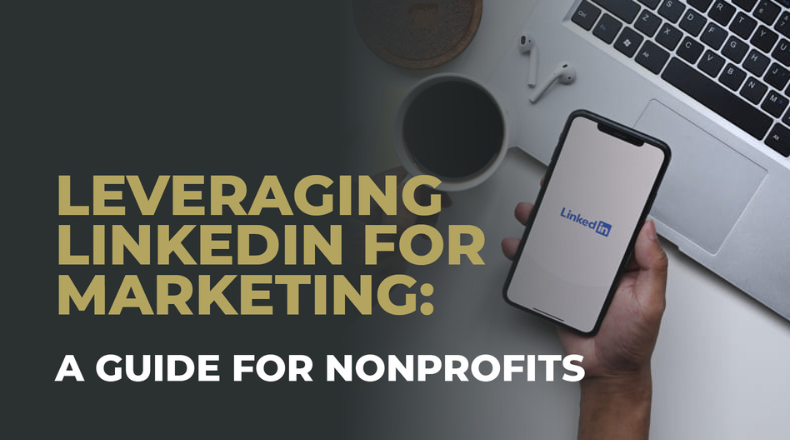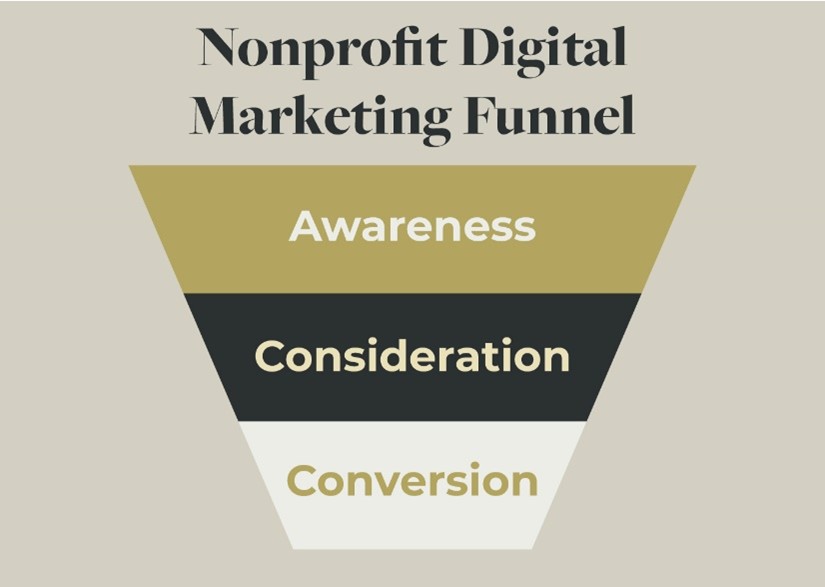Leveraging LinkedIn for Marketing: A Guide for Nonprofits

Whether you’re trying to fundraise for an upcoming event or simply spreading the word about your mission, raising awareness is one of your nonprofit’s core activities. Social media offers the perfect opportunity for you to market your cause more visibly and reach new audiences.
Leveraging sites such as Facebook and Instagram to reach prospective constituents and partners is a great start. However, have you branched out into marketing your nonprofit on different types of social media, such as the professional networking site LinkedIn?
In this guide, we’ll give you tips on how to enhance your digital marketing efforts on LinkedIn. But first, let’s explore why LinkedIn is such a valuable marketing tool for nonprofits.
Why is LinkedIn an effective digital marketing channel for nonprofits?
There are numerous unique benefits that LinkedIn offers for nonprofit users, including:
- Exposure to a professional audience. If your nonprofit is looking to build relationships with corporate partners or colleagues in the sector, LinkedIn provides access to a community looking for professional connections.
- Enhanced credibility and trust. As your nonprofit strengthens its LinkedIn network, your connections can endorse your team’s skills in areas such as fundraising, heightening your organization’s credibility. Plus, your beneficiaries and corporate partners can post about their positive experiences working with your team.
- Heightened fundraising potential. Studies have found that over half of all LinkedIn users have a high household income. This indicates that they have a higher capacity to give—in fact, their users are 56% more likely to give to nonprofits than the average internet user.
- Discounted product licenses. LinkedIn offers discounts for nonprofits on their Sales Solutions products for fundraising. These tools streamline outreach and marketing cadences by offering targeted prospect research searches, providing insights on potential donors’ engagements on the platform, and more.
LinkedIn is not only a great marketing asset for nonprofits but it also provides features that can enhance your approaches to fundraising and donor engagement. Let’s go over the stages of establishing your LinkedIn marketing approach, from creating an account to gauging the success of your efforts.
Developing an Effective LinkedIn Marketing Strategy for Nonprofits
1. Lay the ground work for your marketing efforts. Regardless of whether you’re running a time-bound campaign or are just generally expanding your marketing efforts to LinkedIn, start strong by establishing clear goals and expectations. Begin by determining how LinkedIn fits into your existing digital marketing efforts using the marketing funnel.
The marketing funnel usually has three stages: awareness, consideration, and conversion. Your LinkedIn goals should align with these stages. For instance, if you want to spread the word for an upcoming fundraiser, your marketing activities should target the awareness phase, whereas activities like advanced prospect cultivation would be lower in the funnel. You can visualize the funnel with this example from Fifty & Fifty:

Once you’ve determined LinkedIn’s role in your overall digital marketing strategy, move on to setting your goals. Keep these considerations in mind:
- Team expectations. Who will be responsible for the different aspects of your LinkedIn approach?
- Key performance metrics. How will you measure success?
- Communication cadences. How often will you reach out to LinkedIn users? What communication strategies will you use for different segments?
Take these guidelines and fill in the gaps until you have actionable objectives for your LinkedIn marketing strategy. You can elevate your goalsetting effectiveness further by conducting a SWOT analysis for nonprofits, or a strengths, weaknesses, opportunities, and threats assessment.
2. Build your nonprofit’s LinkedIn network. Cultivating a thriving LinkedIn community helps you build connections faster and secure more attention for your cause. Here’s how:
- Make connections strategically. While going viral massively boosts your visibility, it shouldn’t be your only goal, especially if you’re operating in the lower stages of the funnel. Always prioritize quality over quantity when making connections with prospective donors, partners, and colleagues. For instance, if you notice that a prospect isn’t responding to your messages and seems disinterested in a meeting, your time is better used strengthening a different connection.
- Represent your brand image. Your nonprofit’s branded elements determine your identity and attract people to your LinkedIn community. It isn’t just the visual components of your nonprofit’s brand that matter—it’s also your attitude and tone. Ensure that everyone representing your nonprofit adheres to your brand guidelines so you present a unified identity.
- Leverage LinkedIn Groups. This feature places like-minded users in contact with each other, allowing them to join conversations and connect more deeply with each other. LinkedIn Groups allow you to post general marketing content where a relevant audience will see it while finding prospects for one-on-one conversations.
- Make LinkedIn-specific marketing assets. Adapt your existing marketing materials for LinkedIn’s platform for the greatest impact. For instance, you might highlight how your activities impact corporate social responsibility, skill development, and other industry-specific areas for LinkedIn’s professional audience. Or, you might create branded visual elements sized for LinkedIn’s layout so everything appears correctly.
As long as you genuinely represent your nonprofit’s priorities and mission during your outreach, you can grow an online community that will advocate for your nonprofit and spread the word about your activities.
3. Collect data and iterate on your LinkedIn strategies. Maintaining your success on LinkedIn depends on how you evolve your strategies as your nonprofit and the platform’s ecosystem develops. Ensure you keep these best practices in mind to make your program sustainable:
- Leverage LinkedIn’s analytics. This marketing tool offers multiple tiers of analytics depending on the type of account you use. For company pages, LinkedIn provides more thorough analytics such as follower growth, content performance metrics, and demographic information of profiles who interact with posts. Ensure you understand how these metrics work and how they impact your strategy.
- Evaluate audience feedback. Remember that qualitative metrics can be just as valuable as quantitative data. Ask members of your LinkedIn community to provide feedback on your marketing efforts—what’s working, and what would they recommend changing to improve the quality of outreach? Also, if you have a survey on your donation page asking where donors found your organization, add LinkedIn as an option. That way, you’ll know where your leads are coming from.
- Keep tabs on LinkedIn’s platform updates. From algorithm shifts to new feature rollouts, there are plenty of ways that LinkedIn can change the user experience. Stay on top of these updates so you can continue strategically connecting with prospects and remain visible.
Effectively adapting your approach based on relevant internal and external shifts is the key to a sustainable LinkedIn marketing strategy. Reassessment and refinement will help you keep your nonprofit in tune with your audience and the LinkedIn ecosystem.
Adding LinkedIn to your nonprofit marketing efforts is a must for nonprofits looking to promote their activities within the professional sphere. As long as you keep your mission at the forefront and create high-quality connections, you can enhance your overall approach to digital marketing.
 As Founder and Creative Director of Fifty & Fifty, Javan is the tip of the proverbial spear. Javan started his digital design career 20 years ago as Art Director for what is now one of the world’s largest digital agencies (Mirum, a JWT Company). He then moved on to Invisible Children where he was responsible for managing the team and all digital assets through the entire historic Kony 2012 campaign. At Fifty & Fifty, Javan has participated in and led every project, including 300+ websites, campaigns, and brands.
As Founder and Creative Director of Fifty & Fifty, Javan is the tip of the proverbial spear. Javan started his digital design career 20 years ago as Art Director for what is now one of the world’s largest digital agencies (Mirum, a JWT Company). He then moved on to Invisible Children where he was responsible for managing the team and all digital assets through the entire historic Kony 2012 campaign. At Fifty & Fifty, Javan has participated in and led every project, including 300+ websites, campaigns, and brands.

